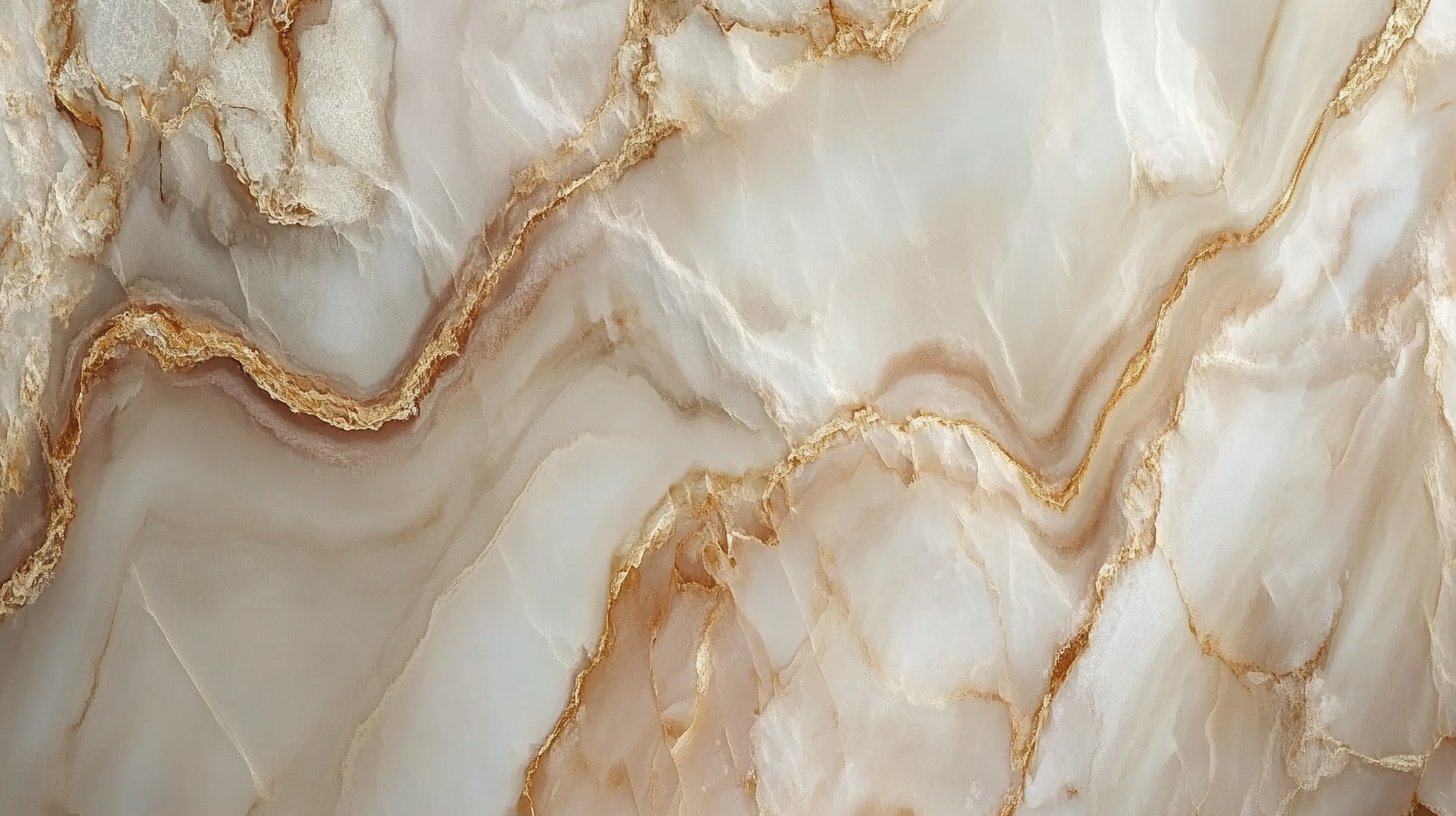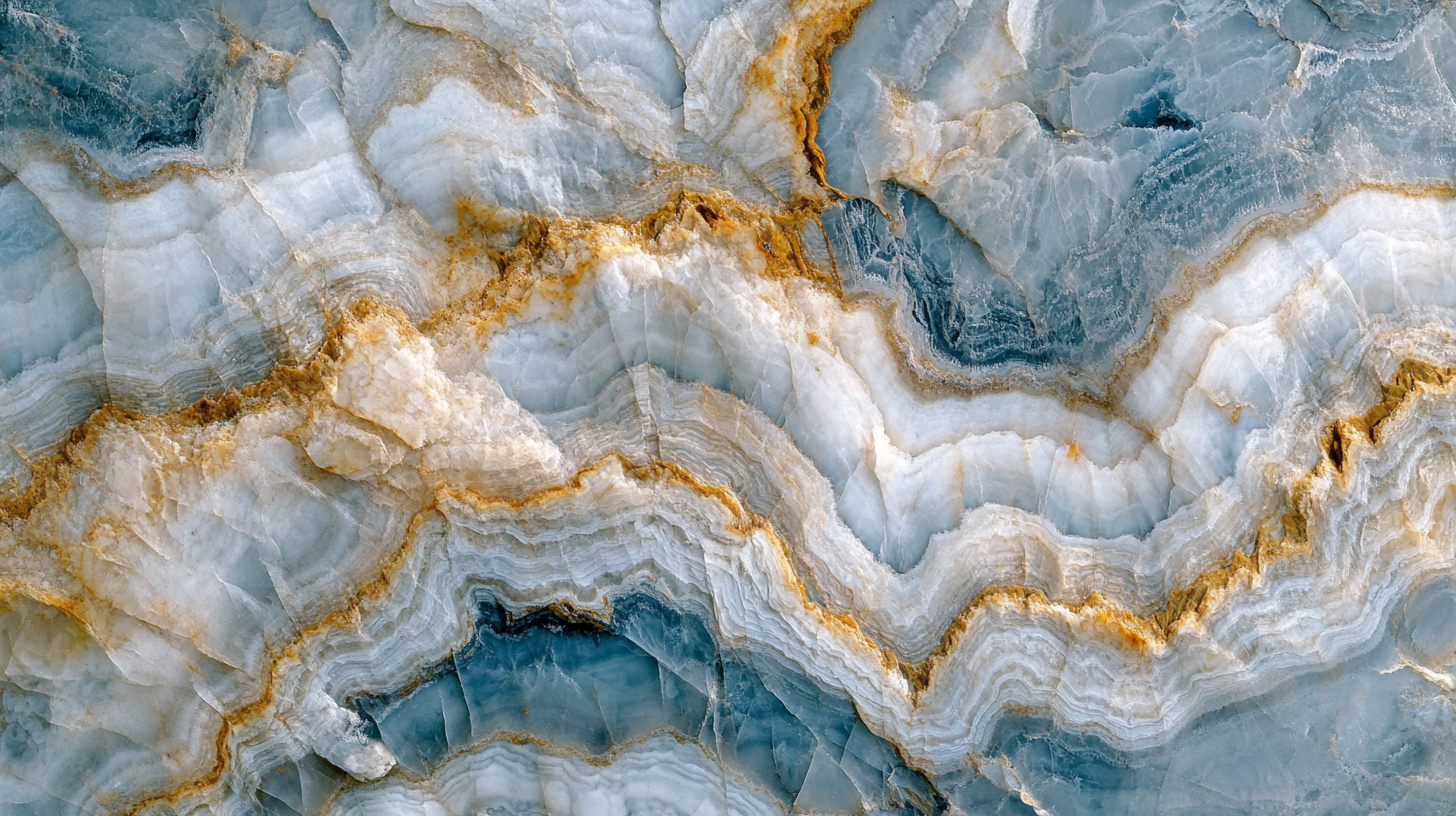Blog
Discover the Timeless Elegance of Quartzite Stone for Modern Architectural Designs
In the ever-evolving world of architecture, the quest for materials that blend beauty with durability has led to a renewed interest in Quartzite Stone. Renowned for its stunning visual appeal and robust characteristics, Quartzite Stone has emerged as a favored choice among architects and designers striving to create modern spaces that exude timeless elegance. This metamorphic rock, formed through the natural process of sandstone undergoing intense heat and pressure, offers a unique array of colors and patterns that can enhance any design aesthetic. As we explore the versatility and practical benefits of Quartzite Stone, we will uncover why it is increasingly becoming the material of choice for contemporary architectural masterpieces, marrying functionality with an artistic touch that stands the test of time.

The Unique Properties of Quartzite: Strength and Beauty Combined
Quartzite is a natural stone that stands out for its remarkable combination of strength and beauty, making it an ideal choice for modern architectural designs. Formed from sandstone through a process of intense heat and pressure, quartzite boasts a hardness comparable to granite, ensuring durability in various applications, from flooring to countertops. Its unique properties make it resistant to scratching, etching, and weathering, making it suitable for both indoor and outdoor settings. Architects and designers often turn to quartzite when seeking materials that can withstand the test of time while maintaining aesthetic appeal.
In addition to its unmatched strength, quartzite's stunning array of colors and patterns adds a touch of elegance to any space. Its natural hues, ranging from soft earth tones to vibrant blues and greens, allow for versatile design options that can complement a wide range of styles. Furthermore, each slab of quartzite is unique, offering an organic, one-of-a-kind look that enhances the visual interest of architectural projects. Whether used as a statement feature wall or a subtle flooring choice, quartzite elevates modern designs with its timeless elegance, proving that beauty and functionality can indeed go hand in hand.
Discover the Timeless Elegance of Quartzite Stone for Modern Architectural Designs
| Property | Description | Benefit for Architecture |
|---|---|---|
| Durability | High resistance to scratching and weathering. | Longevity and low maintenance in various environments. |
| Aesthetic Versatility | Available in a wide range of colors and patterns. | Enhances modern designs with unique visual appeal. |
| Heat Resistance | Can withstand high temperatures without damage. | Ideal for kitchen countertops and outdoor applications. |
| Low Water Absorption | Minimal absorption helps in damp environments. | Prevents water damage in both interior and exterior designs. |
| Sustainability | Natural stone sourced with minimal environmental impact. | Supports eco-friendly architectural choices. |
Incorporating Quartzite in Contemporary Home Design
Incorporating quartzite into contemporary home design has become a definitive trend among architects and interior designers. Renowned for its durability and natural beauty, quartzite is increasingly favored over traditional materials like granite and marble. According to a report by the Natural Stone Institute, 70% of architects surveyed cited durability as a key factor in selecting materials for modern homes. Quartzite not only meets this criterion but also offers a wide variety of colors and patterns, allowing homeowners to create unique and personalized spaces.
Moreover, quartzite's heat resistance and low porosity make it an ideal choice for kitchens and bathrooms, where functionality is paramount. A study by the National Association of Home Builders revealed that over 45% of buyers prioritize natural stone surfaces when selecting homes, further underscoring quartzite’s rising popularity in contemporary architecture. With its blend of aesthetics and performance, quartzite is transforming modern home design, bringing timeless elegance to both new constructions and renovations alike.

Color and Texture Varieties: Choosing the Right Quartzite for Your Project
When selecting quartzite for modern architectural designs, understanding the color and texture varieties is crucial. Quartzite is renowned for its durability and aesthetic appeal, boasting a diverse palette that ranges from soft creams to vibrant blues and deep greens. According to the Natural Stone Institute, the global market for natural stone, including quartzite, is projected to reach $53.6 billion by 2026, indicating a growing demand for this exquisite material. Choosing the right hue can significantly enhance the overall design, creating a harmonious balance with other elements in the space.
**Tip:** When evaluating quartzite options, consider the light conditions of your project. Lighter shades can help brighten smaller spaces, while darker tones can add intimacy and warmth to larger areas. Additionally, pay attention to the texture; honed finishes provide a more muted, elegant look, whereas polished finishes can offer a dramatic, shiny effect that reflects light beautifully.
Incorporating quartzite into your architectural designs not only elevates the visual appeal but also adds lasting value. Data from a recent industry report reveals that homeowners are increasingly opting for natural stones like quartzite, with over 70% expressing a preference for materials that combine beauty with sustainability. Selecting the right quartzite variety based on color and texture is essential to achieving a sophisticated, timeless aesthetic in your modern design projects.
**Tip:** Don't hesitate to request samples from suppliers to see how different quartzite formats perform in your specific lighting conditions and design context. This practical step can help you make a more informed decision that aligns with your vision.
Color and Texture Varieties of Quartzite
Maintenance Tips for Keeping Quartzite Looking New
When it comes to maintaining the stunning beauty of quartzite stone, regular upkeep is essential to preserve its elegance and durability. According to a report from the Natural Stone Institute, properly maintained quartzite surfaces can last a lifetime, making them an excellent investment for modern architectural designs. To keep quartzite looking new, it's crucial to regularly clean the surface with a mild, pH-balanced soap and a soft cloth. This simple routine prevents the buildup of dirt and grime, ensuring that the natural luster of the stone remains intact.
In addition to regular cleaning, sealing quartzite is an effective way to protect it from stains and scratches. Industry studies suggest that sealing every 1-3 years depending on the stone's usage can significantly enhance its longevity. A high-quality penetrating sealer not only helps maintain the stone's appearance but also minimizes the risk of oil or acidic spills causing irreparable damage. Following these maintenance tips ensures that your quartzite surfaces continue to reflect the timeless elegance they are known for, becoming an enduring part of contemporary design aesthetics.

The Environmental Advantages of Using Quartzite in Architecture
Quartzite stone, known for its durability and aesthetic appeal, offers significant environmental advantages in modern architectural designs. Unlike synthetic materials, quartzite is a natural stone that is abundant and sustainable. Its formation process involves the metamorphism of sandstone under heat and pressure, resulting in a product that is not only stunning but also environmentally friendly. By opting for quartzite, architects can reduce their carbon footprint while utilizing a material that requires minimal processing and maintenance.
When considering quartzite for architectural projects, it's essential to prioritize sourcing from responsible quarries that follow sustainable practices. This ensures the conservation of natural resources and minimizes the impact on local ecosystems. Additionally, selecting quartzite that is locally sourced can significantly reduce transportation emissions, further enhancing its environmental benefits.
**Tip:** Incorporating quartzite in both interior and exterior designs can enhance energy efficiency. Its natural insulation properties help maintain temperatures, leading to potential energy savings. Another tip is to explore various finishes and colors, allowing for creative designs that align with sustainable practices without sacrificing style.
